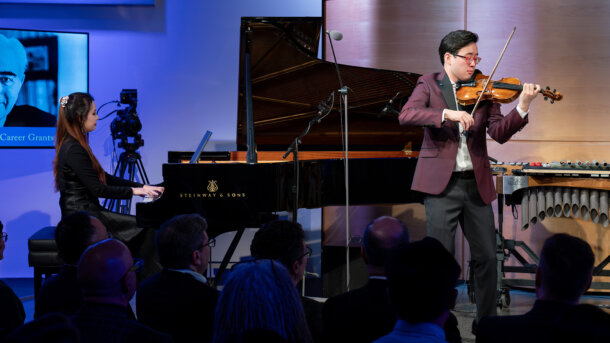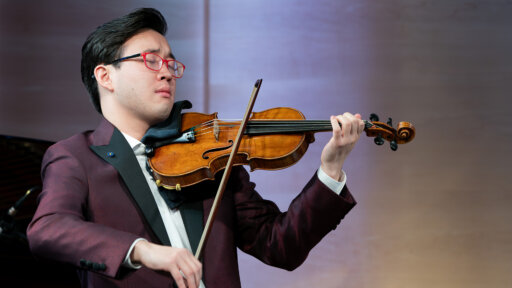
Recipient of the 2024 Avery Fisher Career Grant Award, Julian Rhee’s passion for the violin is a newer revelation. Read about his relationship with his violin, a 1699 Stradivarius titled “The Lady Tennant.” Interested in hearing more from Julian? Watch his full Taking Note profile on YouTube.
My relationship with the violin has been quite a revelation, to say the least. Growing up, practicing wasn’t typically the first activity I wanted to engage in after I came home from school, and spending more time with an inanimate wooden box than with friends seemed slightly amiss. It’s hard to believe, looking back on my 8 year old self’s perspective, that the word I would most instinctively amend now is “inanimate.” To describe a violin as being alive, as having its own personality, its own voice seems a bit absurd, but the time spent with one’s instrument is truly so much more than a session of X’s and O’s.
To practice is to explore, and to invest in one’s instrument is not only a journey of elucidating one’s own voice and intentions, but the instrument’s.
Everyday to be enticed, to be confused, to forge out into the unknown to discover has been one of the most intoxicatingly enriching feelings I could have ever imagined. What exists inside this very small box is an entire universe of possibilities.
People often say that the instrument is an extension of their own voice; I would slightly amend this statement to say that the instrument is its own voice. The phenomenon of performance is really a thoughtful conversation between two entities, and to truly be in dialogue with one’s own instrument can create a kind of interchange on stage that pulls the listener in, that is circumstantially irreplicable, that is alive.
An artist is one who is in a fluid and dynamic partnership with his/her instrument, and successfully translates this union of two voices into a communicative experience. There is not just one voice on stage; there are two.

